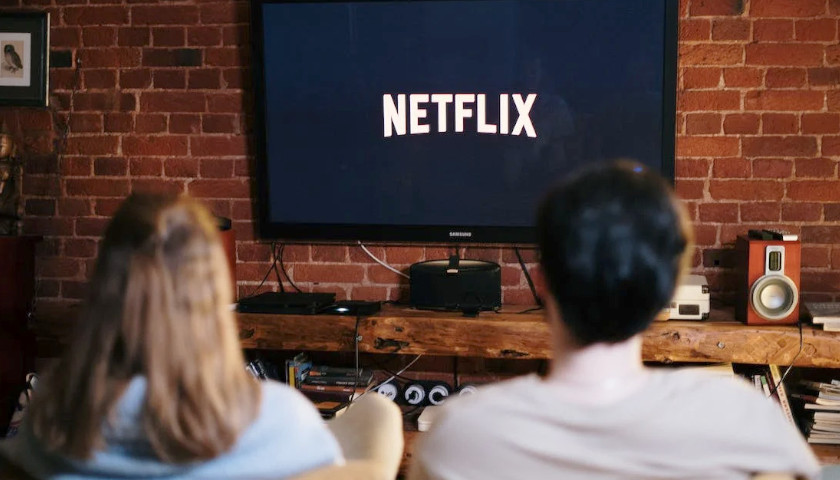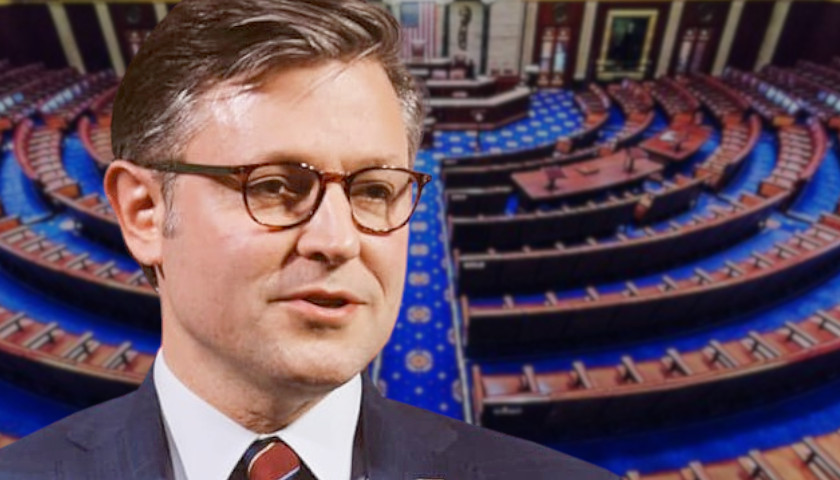by Edward Ring
“Trust should not be doled out easily to anyone, especially white people.”
– Excerpt from “Leave the World Behind,” released on Netflix December 8, 2023
If anyone thinks Netflix has abandoned the so-called woke programming that earned them sustained criticism back in the spring of 2022 and may have played a role in their cratering stock price at the time, their new movie should put that thought to rest. Woke, for lack of a better term, is alive and well at Netflix. Their cozy relationship with nouveau plutocrat power couple and White House alumni, Barack and Michelle Obama, and the blockbuster bomb of a movie they’ve produced together, epitomizes the culture of Netflix today. Such casual racism. “Don’t trust white people.” It’s ok when they do it. But don’t you dare.
To truly appreciate where Netflix is today, one must recall how they began. During the golden age of movie DVDs, in the late 1990s, Netflix arose as the mail-order alternative to renting videos from walk-in stores. But creative destruction never ends. Just as Netflix movies by mail drove corner movie rental stores out of business, streaming made DVDs delivered by mail obsolete.
On September 29, Netflix shipped their last DVD to subscribers and cancelled the service. And with that, one of the last, best windows into nearly a century of American culture was closed forever. At its peak around 2019, more than 100,000 movie titles were available on DVD, arriving in the familiar red envelopes. But as the subscriber base for DVDs shrank and competition from other streaming services grew, Netflix management decided the juice wasn’t worth the squeeze.
This is a rational business decision. Netflix, a content behemoth with an enterprise value that has soared to more than $170 billion, doesn’t need the headache of managing 17 DVD distribution centers tasked with shipping and receiving actual physical media. Netflix owns server farms that dispatch movies electronically, and their investment in physical assets must now prioritize production studios where the company invests literally billions in generating original content. With more than 50 percent of all video consumption in the U.S. now consisting of user generated content at zero cost to platforms like YouTube and TikTok, Netflix’s challenge is keeping their 240 million streaming subscribers, not hanging on to a dwindling cadre of 1.2 million DVD clients.
Nonetheless, losing public access to what was, by far, the greatest collection of movies ever compiled is a tragedy. Netflix streaming services currently offer around 3,600 movies, barely 3 percent of what could be found in their DVD archives. It’s easy to miss the significance of this loss for any American under 30 (or 40?). When it comes to mass entertainment, late millennials and members of Gen Z have spent their entire lives exposed to almost nothing but garbage – stylized violence, mandatory diversity, movies without plots; nothing but action, special effects, and political indoctrination. Why would anyone who hasn’t sampled the rich legacy of American film before the age of woke have any idea what they’re missing – not only what movies once were, but how they depict what life was once like?
For 25 years, Netflix gave us all a chance to touch the memories that defined us, the world we knew. Movies are an incomparable window into American history and culture, good and bad. They incorporate bits of everything, not merely the stories we told but the fashion, the music, the technology of the time. They show us what our nation looked like in each decade, who we were and how we lived.
The average American now spends two hours and 24 minutes every day on social media, typically either blowing out their emotional equilibrium in pointless, endless acrimony, or flipping through addictive, useless videos. The average American between the ages of 15 and 24 spends over an hour every day playing video games, equally addictive and equally useless.
Netflix, until September 29, offered something more. It not only offered a boundless oeuvre of cinematic drama, a glimpse into America’s soul, it offered long-form content devoid of cheap tricks and vacuous, agenda driven narratives. These old movies delivered intricate plots that required sustained attention.
With old movies we can see clearly how each decade brought a new way of looking at the past. What was dramatic and authentic then is often seen now as ham-handed and corny. In the early American Westerns, our portrayals of Indians were arguably toxic but also naive. A white actress would play the part of an Indian squaw, with incongruous blue eyes and red greasepaint on her face that the makeup artist didn’t even bother to extend to her hairline. White men would act the parts of Indians by wearing dark wigs with ponytails and neglecting to conjugate their verbs. And the music: a brass section ominously blasting pentatonic melodies in parallel fifth harmony every time an Indian appeared on the horizon or galloped up on horseback. There is value in seeing these tropes today. It reminds us how far we’ve come.
Old movies also remind us how far we’ve fallen. Movies show us what life was like before, for example, oligarchs started using “green” building codes to turn the U.S. into a rentier economy. Ward Cleaver today would not be strolling up a path surrounded by lawn to greet his wife and sons in a detached home with a yard. That man today would come home to a condo, his “owned” square footage part of a building with sixteen units per acre and no yard. He and his wife would both work full time to pay a mortgage that would consume every spare dime they could earn. Children, if they had any, would be holed up in a dark bedroom, glued to their screens.
Movies remind us of what we faced in more difficult times, and how we coped with challenges that dwarf – at least so far – the problems of today. Watch a young Sterling Hayden, a commander in the classic 1952 World War 2 drama “Flat Top,” whip his recruits into shape for air combat. Watch Henry Fonda try to keep his family together in “The Grapes of Wrath,” as they are displaced during the Great Depression in the 1930s. Watch Jimmy Stuart’s character in “It’s a Wonderful Life” fall into despair, then recover his optimism with the support of his small community, or watch the entire City of New York rally behind Edmund Gwenn’s character in “Miracle on 34th Street.” These and countless others were inspiring, sobering movies that have lasting relevance, produced by people who loved this country and wanted to encourage values of unity and selflessness. Movies made by people whose social consciousness expressed itself by presenting and upholding inspiring role models, traditional values, and patriotism, and by rejecting decadence. Try to find these classics on Netflix streaming. You might find a few dozen of the biggest hits. The rest, which are nowhere to be found, will fade further into obscurity, along with the culture that made them.
Movies from decades long past show what life was like in America before the nation simultaneously drowned itself in debt while its suddenly disenfranchised youth disappeared into an online stupor. They show us what life was like before, without anyone being consulted, and within just a few decades, we overturned our entire national ethnic composition at the same time as our ruling class decided to teach all of America’s new arrivals to view those of us who were already here as privileged racists living on stolen land. Movies made before this historic betrayal depicted a high trust society, flawed to be sure, but committed to a shared culture and shared heritage.
All of that is gone now. Without the ability to see our history, dramatized and made accessible through old movies, will enough of us tomorrow recognize the revolutionary intent of movies like Leave the World Behind? Its part in the movement to Fundamentally Transform America? Or will our history and our people have melted into an undifferentiated, timeless, Pavlovian, algorithmically curated now?
Netflix gave us something beautiful, then took it away. It was good while it lasted.
– – –
Edward Ring is a contributor to American Greatness.





